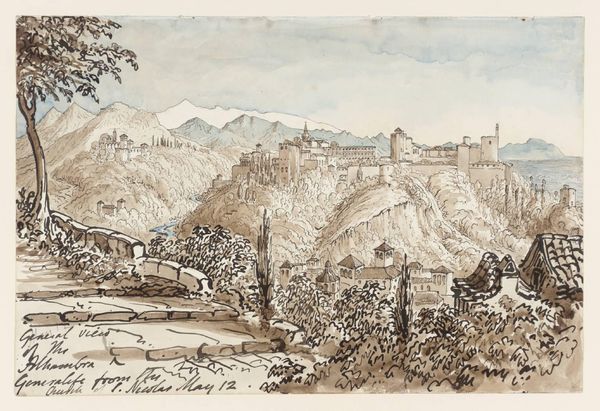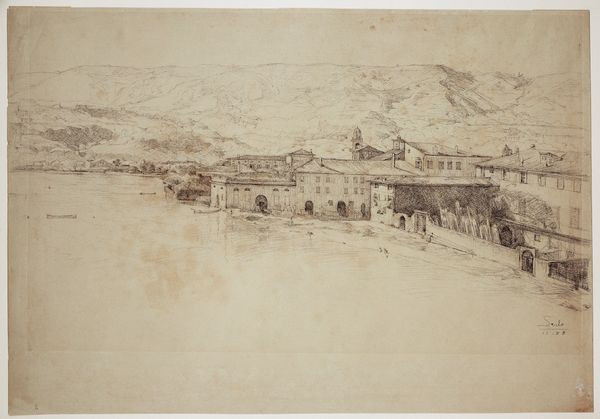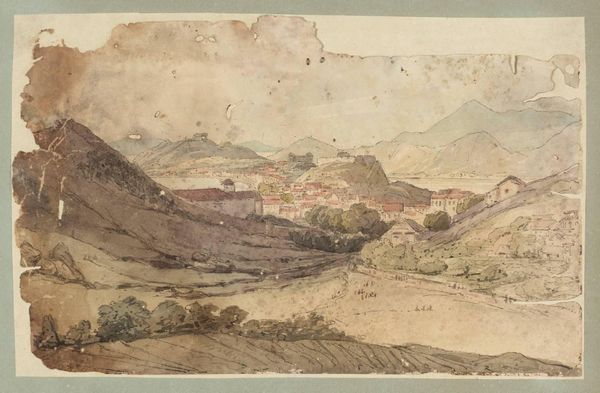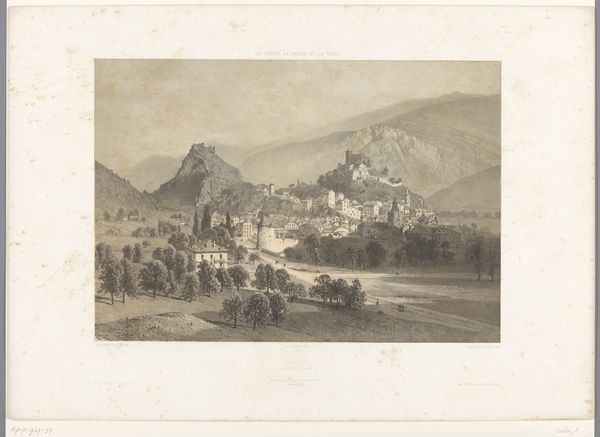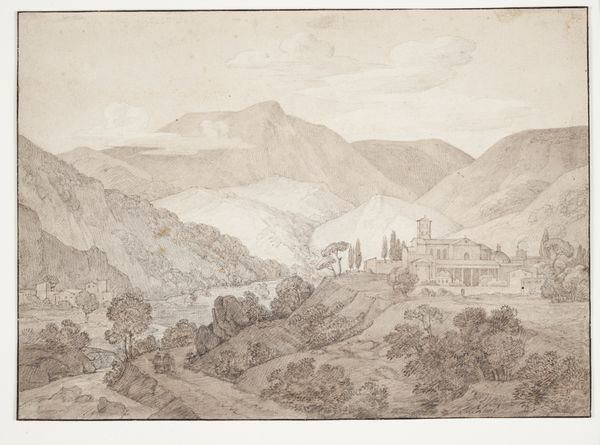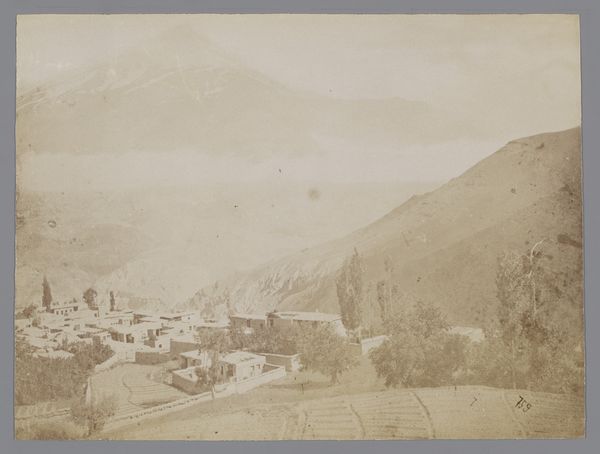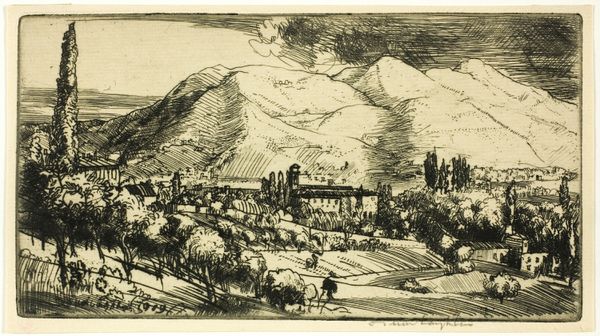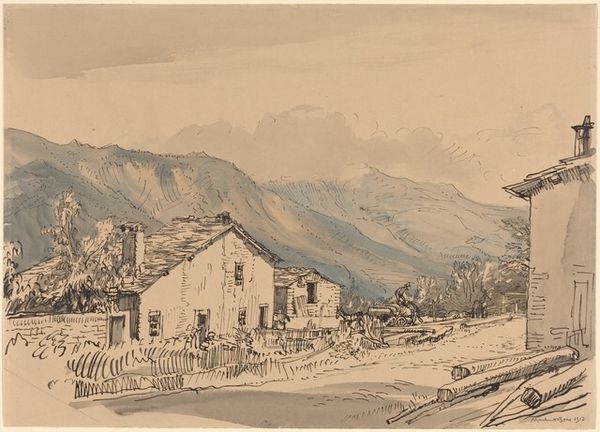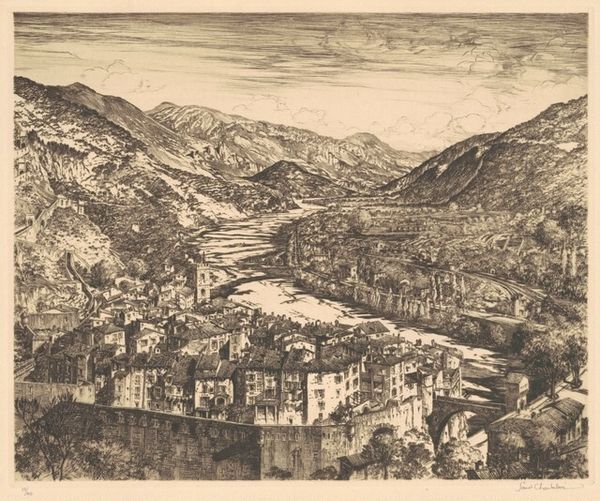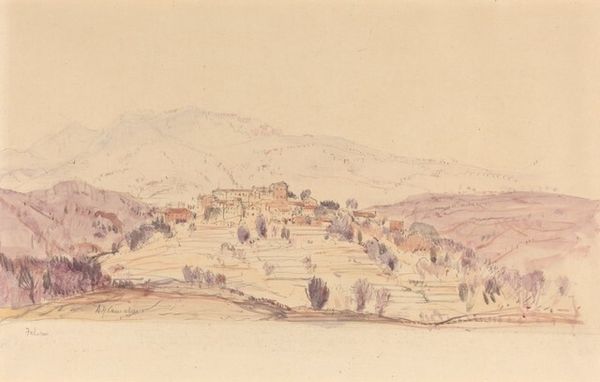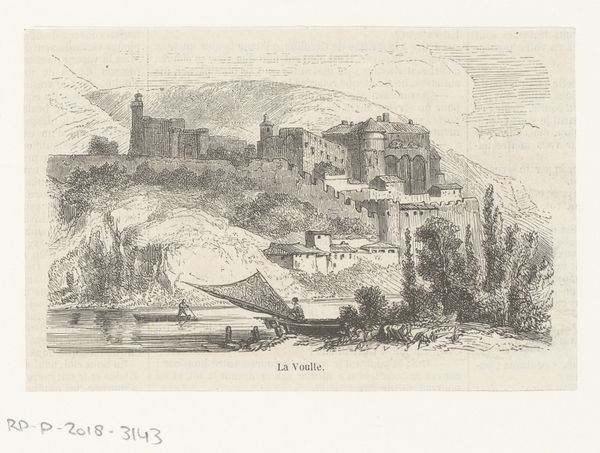
Dimensions: support: 260 x 375 mm
Copyright: CC-BY-NC-ND 4.0 DEED, Photo: Tate
Editor: Jonathan Skelton's "Tivoli," a sepia drawing in the Tate collection, depicts the Italian hillside town in muted tones. What strikes me is the way the architecture seems to emerge naturally from the landscape. What do you see in this piece? Curator: The architecture is of importance, but it is not the entire story. The location itself held great significance; it became symbolic as a site of picturesque beauty, the embodiment of nature and classical antiquity. Its imagery evokes cultural memory. How does this knowledge change your interpretation? Editor: That's so interesting! Knowing that Tivoli held such symbolic weight makes me appreciate the work much more. Thanks for your insight. Curator: Indeed, the cultural weight adds to the overall interpretation of the piece and the landscape tradition.
Comments
Join the conversation
Join millions of artists and users on Artera today and experience the ultimate creative platform.
tate 6 months ago
⋮
Jonathan Skelton is an important figure in the emergence of the British landscape tradition, although comparatively little is known about him, other than the evidence of his surviving works and a handful of letters sent from Italy to his British patron. He arrived in Rome in December 1757 and embarked upon an intense study of the surrounding landscape. Tivoli had a particulr appeal for Skelton, which he described as ‘ye only school where our two most celebrated Landscape Painters Claude and Gasper studied’. Skelton, who appeared to exist on a near starvation diet, died of a fever in Rome in January 1759. Gallery label, April 2007
